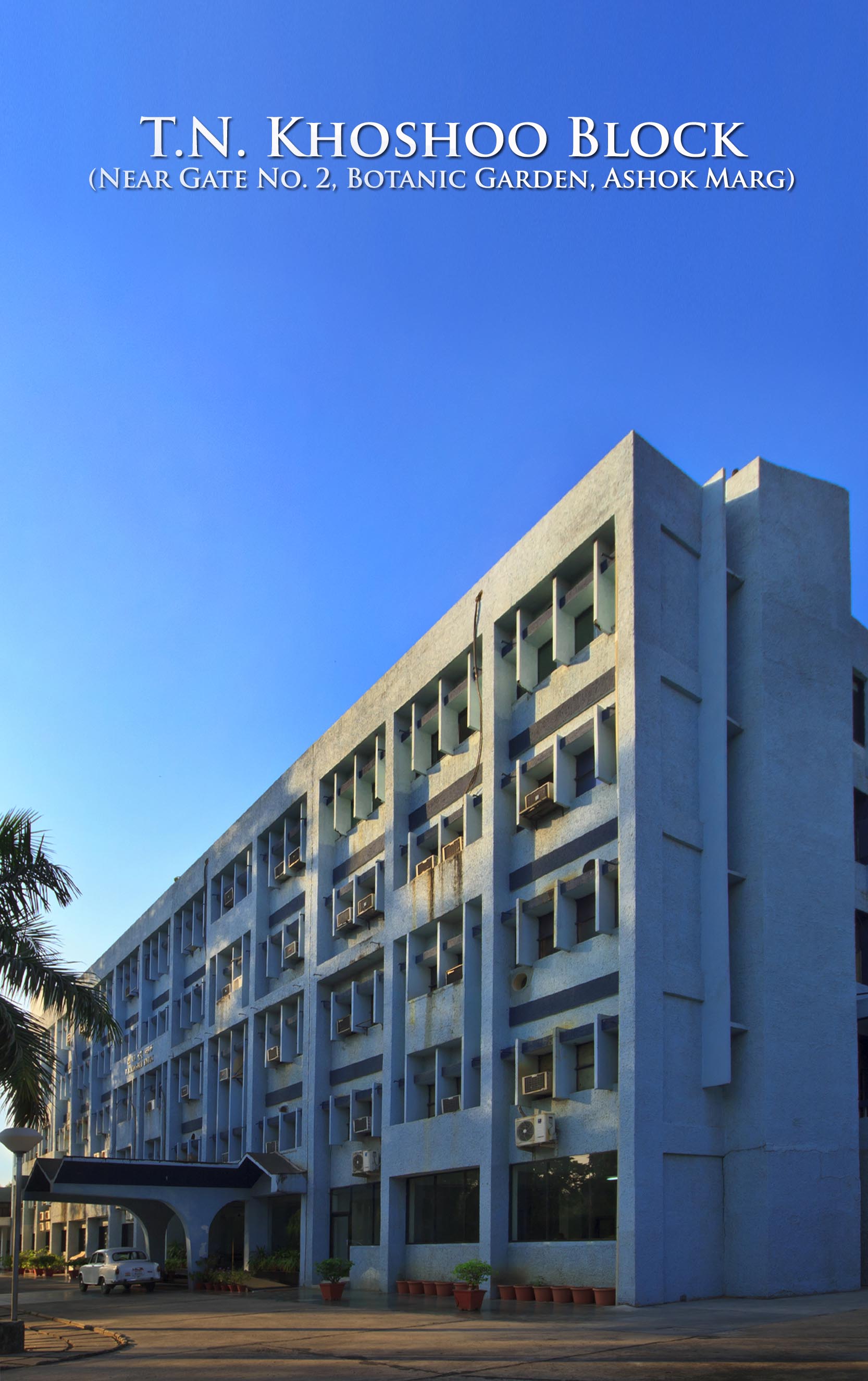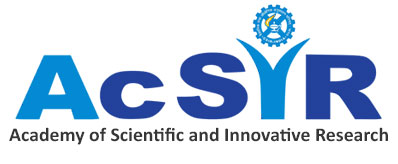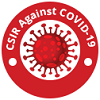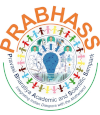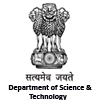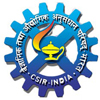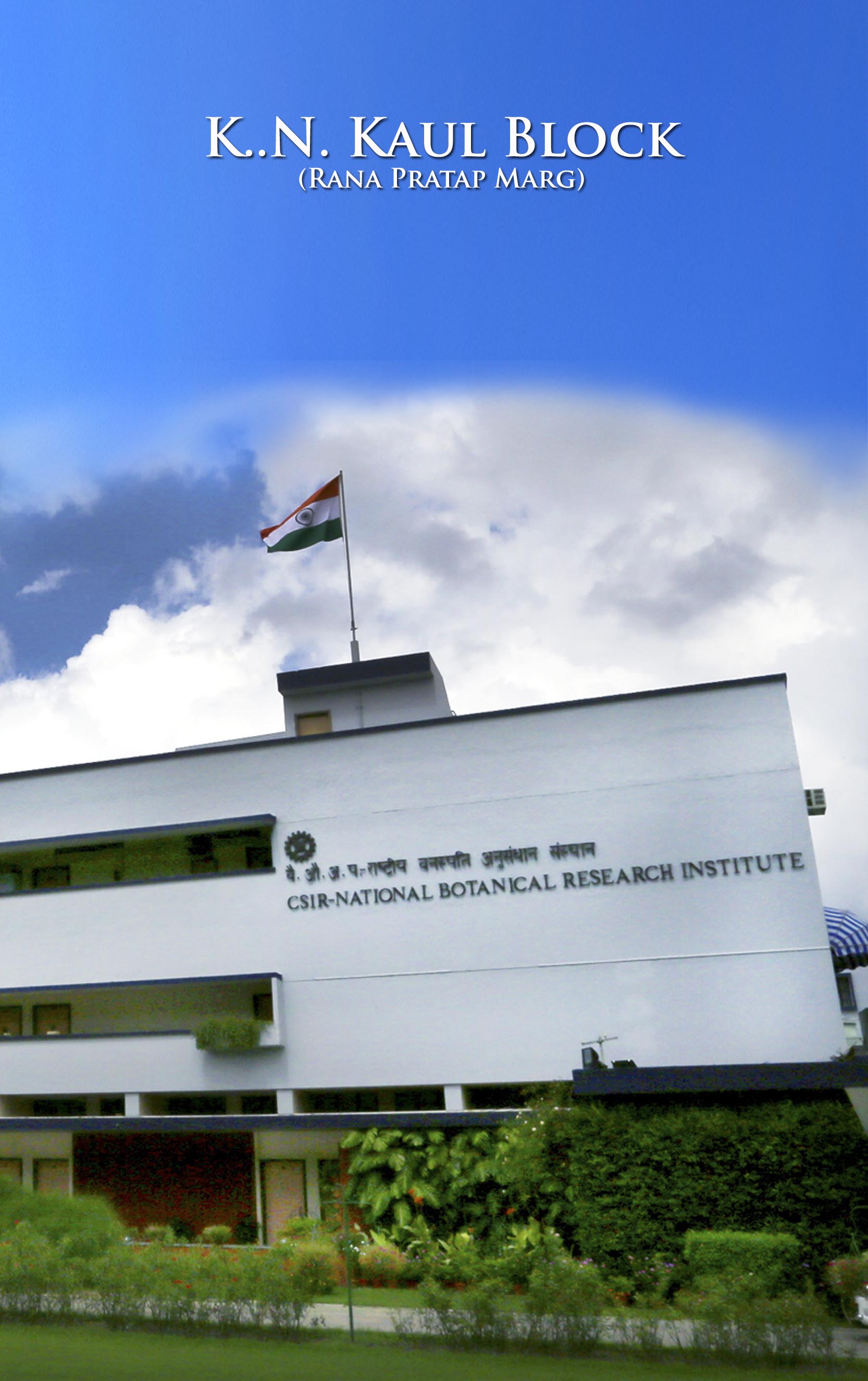

Dr. Praveen C. Verma
Senior Principal Scientist
Research Interests
The research in my lab focuses on development of transgenic cotton plants for various abiotic and biotic stresses and male sterility. For insect resistant cotton plant development various approaches are adopted e.g, novel insecticidal proteins, siRNA, cry proteins, and plant’s own defence mechanism (methanol production). Stacking of these genes together will certainly provide protection against wide range of insect pests. Insect inducible methanol production in cotton using pectin methyl esterases (PME) gene showed promising results against range of cotton insect pests including both chewing and sucking types. We also like to study the genetic and epigenetic gene regulation during insect infestation in cotton especially in reference with pectin methyl esterases. We are also involved in genome editing by the CRISPR/Cas9 system to be used in tomato for enhanced shelf life.
Dr. Praveen C. Verma
Senior Principal Scientist
Research Summary
siRNA mediated control of Cotton mealybug (Phenacoccus solenopsis) using integrated transcriptomic and proteomic approaches.
Cotton mealybug, Phenacoccus solenopsis, is a major insect pest that feeds on cotton plant causing extensive damage leading to crop and productivity loss. Different stages of mealybug has potential role in spreading and damaging the crop plants. In this context, we have studied the genome wide response of mealybug infesting cotton using transcriptomic and proteomic approaches. Our comprehensive genome wide analyses have revealed several new and interesting insights to the different developmental stages of mealy bugs. Knowledge gained through this study could be further exploited to develop RNAi strategy against the pest in controlling their spread in economically important crop like cotton.
Insect Inducible Expression of PME in Plants for Broad Spectrum Insect Resistance.
Plant cell wall plays a major role in defense mechanism against biotic and abiotic stress as it constitutes the physical barrier between the microenvironment and internal component of the cell. As emitted methanol is toxic to the insect pest, we use PME gene for the better methanol production. Our group works on over expression of PME gene under the insect inducible promoter which causes enhancement of methanol production at the time of insect attack, this provides better insect resistance property to the plant. We found 10-15 folds enhanced methanol content and emission level at different inducible time point interval (15min, 30min, 45min, 60min) which causes 85-90% mortality caused by transgenic tobacco in both chewing (Spodoptera litura & Helicoverpa armigera) and sap-sucking (Aphid, mealybug & whitefly) pest.
CRISPR/Cas9 mediated genome editing in tomato for manipulating fruit shelf-life
Tomato is a major crop plant that and is ranked first among all vegetables in terms of its nutritional value. Although tomato production has been increasing within the country, a large fraction is lost to post-harvest due to poor shelf life and rapid deterioration following ripening, leading to considerable economic losses to the farmers. Reducing these losses is essential and has been attempted by breeding and transgenic means to varying success. Here, in this study, we are targeting two ripening-specific enzymes. The main objective of this research is thus generating a reproducible system of genome editing by the CRISPR/Cas9 system for use in tomato and possibly other Solanaceous plants. Also, the genome edited fruit would be expected to show delayed fruit ripening.
Development of F1-Hybrid Cotton using Novel Reversible Male Sterility System
Developing male sterile lines of crop plants is important for their deployment in hybrid development. Hybrid seeds are used for stimulated crop production, as they harness heterosis. The achievement of complete male-sterility in the female-parent and the restored-fertility in F1-hybrids are the major bottlenecks in the commercial hybrid seed production. We have earlier demonstrated the male sterility–fertility restoration system by engineering tapetum of female and male parents in tobacco. This proof of concept is now successfully demonstrated in a commercially important fibre yielding crop, Cotton. Here, for the first time we have demonstrated the development of transgenic cotton female lines showing 100% male sterility.
Functional Characterization of cytochrome P450’s putatively involved in biosynthesis of specific withanolides in Withania somnifera
The Transcriptome analysis of different chemotypes of withania somnifera was performed to identify some important members of gene families viz. cytochrome P450s, glycosyltransferases and methyltransferases involved in the synthesis of withanoloids. For the validation and functional characterization of gene namely cyp450, putatively involved in the distal pathway, The gene was cloned in three different chemotypes for the development of hairy root culture. The transgenic hairy roots expressing cyp450,will be further evaluated for its involvement in the withanolide production.
Dr. Praveen C. Verma
Senior Principal Scientist
Publications
– G Kaur, Surjeet Kumar Arya, Babita Singh, Sanchita Singh, Yogeshwar Vikram Dhar, Praveen C. Verma*, Deepak Ganjewala. (2019). Transcriptome analysis of the palmarosa Cymbopogon martini inflorescence with emphasis on genes involved in essential oil biosynthesis. Industrial Crops and Products, 140:111602.
– Lav Singh, Pooja Dixit, Ravi Prakash Srivastava, Shivaraman Pandey, Praveen C Verma and Gauri Saxena.. (2019) Ethnobotany and Pharmacology of Pinus Species Growing Naturally in Indian Himalayas: A Plant Review. Current Pharmaceutical Biotechnology
– G Kaur, Deepak Ganjewala, Vidisha Bisht, Praveen C. Verma. (2019). Antifungal and larvicidal activity of lemongrass essential oil against fungal pathogens and insect larvae. Pharmaceutical Sciences. Archives of Phytopathology and Plant Protection, 52(4)-17-24.
– Alka Singh, Surya Prakash Dwivedi1, Alka Srivastava and Praveen C Verma. Molecular characterization of arsenic resistant bacteria isolated from semi arid coal mine tailings of Assam. Pollution Research, 2019, 38 (1): 222-233.
– Srivastava RP, Dixit P, Singh L, Verma PC, Saxena G. Status of Selinum spp. L. a Himalayan Medicinal Plant in India: A Review of Its Pharmacology, Phytochemistry and Traditional Uses. Current Pharmaceutical Biotechnology 2018;19(14):1122-1134.
– Srivastava RP, Dixit P, Singh L, Verma PC, Saxena G. Comparative morphological and anatomical studies of leaves, stem, and roots of Selinum vaginatum C. B. Clarke and Selinum tenuifolium Wall. Flora, 2018, 248:54-60.
– Surjeet Kumar Arya, Yogeshwar Vikram Dhar, Gourav Jain, Santosh Kumar Upadhyay, Mehar Asif, Praveen C Verma. De novo characterization of Phenacoccus solenopsis transcriptome and analysis of gene expression profiling during development and hormone biosynthesis. Scientific Reports, 2018, 8:7573.
– Ankit Singh, Gurminder Kaur, Sanchita Singh, Neetu Singh, Gauri Saxena, Praveen C. Verma*. Recombinant Plant Engineering for Immunotherapeutic Production. Current Molecular Biology Reports. 2017, 3: 306–316.
– Surjeet Kumar Arya, Gourav Jain, Santosh Kumar Upadhyay, Harpal Singh, Praveen Chandra Verma*. Reference genes validation in Phenacoccus solenopsis under various biotic and abiotic stress conditions. Scientific Reports. 2017, 2017, 7:13520.
– Garima Dixit, Trusha Tripathi, Ashish Praveen, Praveen C Verma*. (2016). Herbivore-responsive cotton phenolics and their impact on insect performance and physiology. Journal of Asia-Pacific Entomology 2017, 20: 341–351.
– Anoop K Shukla, Santosh K Upadhyaya, Harpal Singh, R Singh, Manisha Mishra, S Saurabh, Preeti Rai, Nidhi Thakur, J Kumar, K.Chandrashekar, Praveen C Verma, Ajeet P Singh, K.N.Nair, S.Bhadauriya, Md. Wahazudin, S.Singh, S. Sricvastava, R.S.Upadhyay, Omkar, S.A.Ranade, Rakesh Tuli and Pradhyumna K.Singh. Expression of novel fern protein in cotton protects against whitefly. Nature Biotechnology 2016, 34: 1046–1051.
– Namrata Singh, Sunil Gupta, Naina Marwa, Vivek Pandey, Praveen C. Verma, Sushma Rathaur, Nandita Singh. Arsenic mediated modifications in Bacillus aryabhattai and their biotechnological applications for arsenic bioremediation. Chemosphere 2016, 164:524-534.
– Pooja Dixit, Lav Singh, Praveen C Verma, Gauri Saxena. Altitudinal influence on leaf and wood anatomy and its ecological implications in Cephalotaxus griffithii of Indian Himalayas. J.Biol.Chem.Res.2016, 33:388-399.
– Samatha Gunapati, Ram Naresh, Sanjay Ranjan, Deepti Nigam, Aradhana Hans, Praveen C. Verma, Rekha Gadre, Uday V. Pathre, Aniruddha P. Sane, Vidhu A. Sane. Expression of GhNAC2 from G. herbaceum, improves root growth and imparts tolerance to drought in transgenic cotton and Arabidopsis. Scientific Reports. 2016, 6:24978.
– Vibha Pandey, Rakesh Srivastava, Nehal Akhtar, Jyoti Mishra, Pratibha Mishra, Praveen C Verma*. Expression of Withania somnifera Steroidal Glucosyltransferase gene Enhances Withanolide Content in Hairy Roots. Plant Mol Biol Rep. 2016, 34(3), 681-689.
– Shikha Verma, Pankaj Verma, Pankaj K Srivastava, Praveen C Verma, Debashish Chakraborty.A novel arsenic methyltransferase gene of Westerdykella aurantiaca isolated from arsenic contaminated soil: phylogenetic, physiological, biochemical studies and its role in arsenic bioremediation. Metallomics. 2016, 8: 344-353.
– Namrata Singh, Naina Marwa, Shashank k. Mishra, Jyoti Mishra, Praveen C. Verma, Sushma Rathaur, Nandita Singh. Brevundimonas diminuta mediated alleviation of arsenic toxicity and plant growth promotion in Oryza sativa L. Ecotoxicology and Environmental Safety. 2016, 125: 25–34.
– Santosh Kumar Upadhyay, Harpal Singh, Sameer Dixit, Venugopal Mendu, Praveen C Verma*. Molecular characterization of vitellogenin and vitellogenin receptor of Bemisia tabaci. PLoS One. 2015,11(5):e0155306.
– Harpal Singh, Krishan Mohan Rai, Santosh Kumar Upadhyay, Poonam Pant, Praveen C Verma, Ajit Pratap Singh , Pradhyumna Kumar Singh. Transcriptome sequencing of a thalloid bryophyte; Dumortiera hirsuta (Sw) Nees: assembly, annotation, and marker discovery. Scientific Reports. 2015, 5:15350 | DOI: 10.1038/srep15350.
– Praveen C Verma*, Harpal Singh, AS Negi, Gauri Saxena, Laiq Ur Rahman & Suchitra Banerjee. Yield enhancement strategies for the production of Picroliv from hairy root culture of Picrorhiza kurroa Royle ex. Benth. Plant Signal Behav. 2015, 10(5):e1023976. doi: 10.1080/15592324.2015.1023976
– Manvi Singh, Pankaj Srivastava, Praveen C Verma, Ravindra Nath Kharwar, Rudra Dev Tripathi. Soil Arsenic Pollution and Fungi: Scope of mycoremediation of arsenic in agriculture soils. Journal of Applied Microbiology 2015, 119(5)–1278–1290.
– SK Upadhyay, S Sharma, Harpal Singh, S Dixit, J Kumar, Praveen C Verma*, K.Chandrashekar. Whitefly genome expression reveals host-symbiont interaction in amino acid biosynthesis. PLoS One. 2015, 22;10(5):e0126751. doi: 10.1371/journal.pone.0126751.
– Ankit Singh, Subhi Srivastava, Ankita Chouksey, B.S.Panwar, Praveen C Verma*, S.Roy, P.K.Singh, G. Saxena, R.Tuli. Expression of Rabies Glycoprotein and Ricin Toxin B Chain (RGP-RTB) Fusion Protein in Tomato Hairy Roots: A Step Towards Oral Vaccination for Rabies. Molecular Biotechnology. 2015, 57:359-370. (DOI 10.1007/s12033-014-9829-y).
– Harpal Singh, Sameer Dixit, Praveen Chandra Verma*, & Pradhyumna Kumar Singh. Evaluation of Total Phenolic Compounds and Insecticidal and Antioxidant Activities of Tomato Hairy Root Extract. J. Agric. Food Chem. 2014, 62(12):2588-94.
– Nidhi Thakur, Santosh K Upadhyaya, Praveen C Verma, K.Chandrashekar, and Rakesh Tuli and Pradhyumna K.Singh. Enhanced whitefly resistance in transgenic tobacco plants expressing double stranded RNA of V-ATPase gene. PLoS One. 2014, 3: 9(3):e87235. (doi: 10.1371/journal.pone.0087235).
Dr. Praveen C. Verma
Senior Principal Scientist
Patents
Patent: 3 nos.
– US Patent No.:6589780 B2. Suchita Banerjee, A.K. Kukreja, Praveen C.Verma, A.P. Kahol, and Sushil Kumar. Bioreactor for enhancing the Biomass yield of plant organ. (2003).
– South Africa Patent No.: 2014/04656. Singh PK., Upadhyay SK., Chandrashekar K. , Saurabh S., Singh R., Rai P., Singh H., Verma C Praveen., Tuli R.A process for preparation of a novel insecticidal chitinase toxic against whiteflies, its encoding nucleotides and application thereof (30th Sept 2015). 176NF2011ZA
– WO2016075710 A1: Singh P.K., Singh R., Chandrashekar K., Rai P., Saurabh S., Upadhyay S.K., Singh H., Mishra M., Singh A.P., Verma P.C., Nayar K.N and Tuli R A novel Insecticidal protein toxic to whiteflies and lepidopteran caterpillars, toxin encoding gene and its application thereof.
Dr. Praveen C. Verma
Senior Principal Scientist
Research Scholars
Ms. Jyoti Mishra, Ph.D. Student
Mr. Gourav Jain, Ph.D. Student
Ms. Alka Srivastava, Ph.D. Student
Ms. Sanchita Singh, Ph.D. Student
Ms. Sushmita, Ph. D. student
Mr. Shatrughan Shiva, Ph. D. student
Ms. Manisha Singh, PA level II
Ms. Prabha Mishra, PA level II
Dr. Praveen C. Verma
Senior Principal Scientist
Address
Lab No. F-17 & 18, Department of Molecular Biology & Biotechnology,
CPMB Building, CSIR-National Botanical Research Institute, Rana Pratap Marg,
Lucknow – 226001(UP)
Phone no.: 0522-2297922, 980
Email: praveencverma@nbri.res.in
